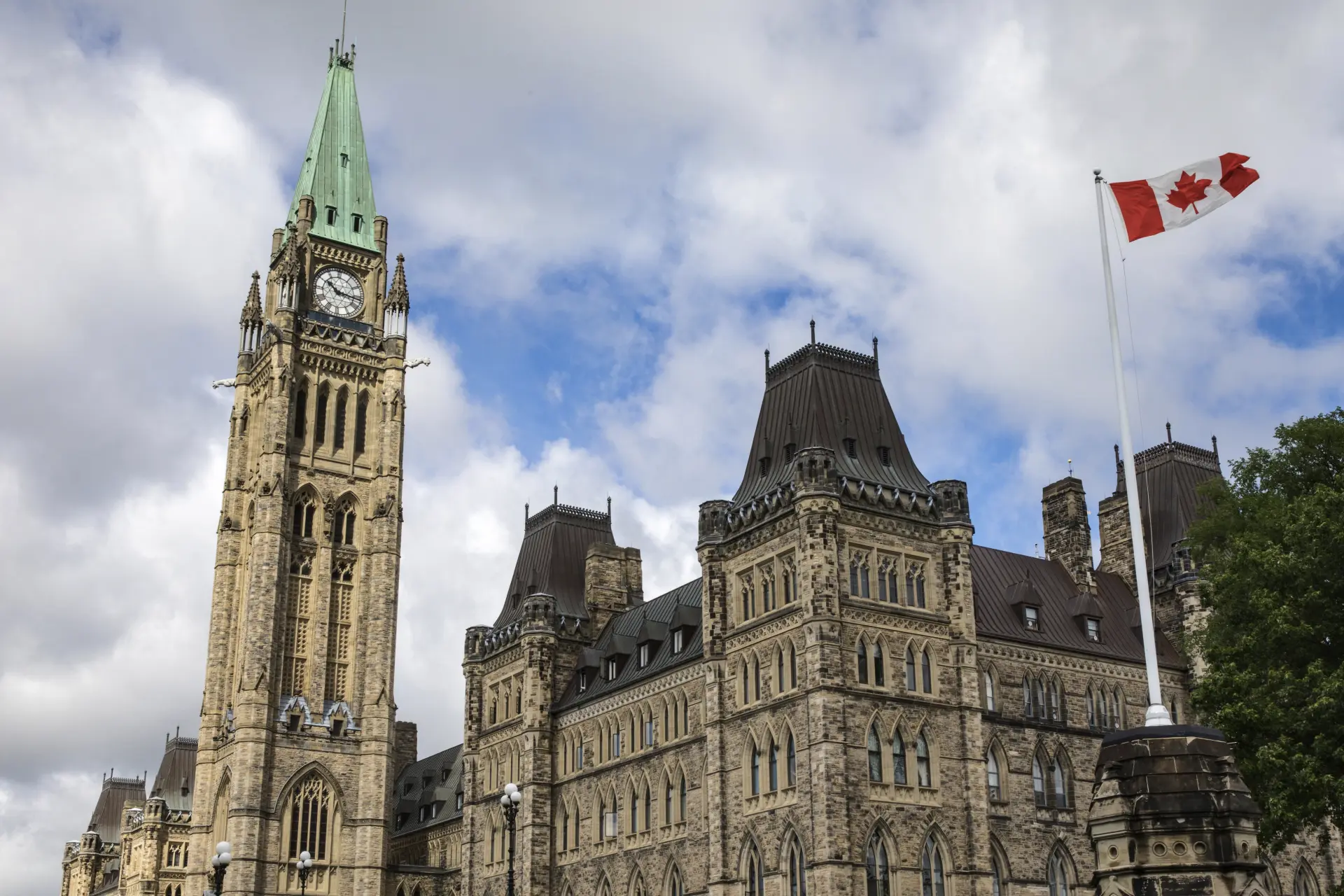New Federal Coal and Natural Gas-fired Electricity Regulations: A Sussex Overview

On December 12th the Federal Government published two final regulations that will significantly impact the Canadian electricity sector. While the Regulations are specific to thermal electricity generation, the Regulations create some opportunity for other generation types as Canada works towards 90% GHG non-emitting power by 2030.
The amendments to the 2012 Reduction of Carbon Dioxide Emissions from Coal-fired Generation of Electricity Regulations will phase out traditional coal-fired electricity by 2030. The new Regulations Limiting Carbon Dioxide Emissions from Natural Gas-fired Generation of Electricity support the coal phase-out and set emissions limits on new electricity generation units that burn natural gas. Both regulations may be found in this week’s Canada Gazette, here.
What follows is quite a bit of information, drawn from over 130 pages of the Canada Gazette. There is much more detail within both the regulations and the Regulatory Impact Analysis Statements. If you are interested in more information on a specific element or impact, please just let me know.
Top Line: Natural Gas Regulations
- Draft regulations were published on February 17th, 2018.
- No significant differences between the draft and the final Regulation beyond a few small tweaks to compliance testing protocols, etc.
- Applies to any boiler unit >25MW that begins generating electricity on or after Jan 1 2019 if electricity is sold to the grid.
- Applies to any combustion engine >25 MW that begins generating electricity on or after Jan 1 2021 if >33% of electricity is sold to the grid.
- Applies to any thermal unit >25 MW that is moved, replaced or significantly modified.
- Combustion engine limits, taken as an annual average carbon intensity:• 420 t/GWh for new units > 150MW
- 550 t/GWh for new units between 25 MW and 150 MW
- Boiler limits (coal-to-gas conversions):
- If emissions are > 600 t/GWh à prohibited
- If emissions are between 550 t/GWh and 600 t/GWH à can run for 5 years
- If emissions are between 480 t/GWh and 550 t/GWH à can run for 8 years
- If emissions are between 420 t/GWh and 480 t/GWH à can run for 10 years
- If emissions are less than 480 t/GWh à can run indefinitely
- Owners must perform annual carbon intensity tests. Results cannot exceed 2% increase from the previous year’s test.
- Comes into force on January 1, 2019.
Top Line: Coal Regulations
- Sets a performance standard of 420 t/GWh for all grid-connected coal-fired electricty plants in Canada.
- Effectively limits the life of coal-fired electricity generation units to:
- 50 years for units commissioned before 1975
- 50 years or December 31, 2029, whichever is earlier, for units commissioned after 1975
- If a coal unit meets the 420 t/GWh standard, such as SaskPower’s Boundary Dam Unit #3 with CCS, it may remain open indefinitely.
- Came into force on December 12th, 2018.
Additional Context: Natural Gas Regulations
The Regulations impose performance standards (CO2 emission intensity-based limits) on new and significantly modified natural gas-fired electricity generating units. New units include:
- combustion engine units (gas turbines and reciprocating engines) that begin producing electricity on or after January 1, 2021; and
- natural gas boilers that begin producing electricity on or after January 1, 2019.
The objective of the Regulations is to limit CO2 emissions from natural gas-fired electricity generation by ensuring new and significantly modified natural gas-fired electricity units are subject to emission performance standards. In doing so, the Regulations will provide regulatory certainty on the level of such standards. This is expected to facilitate the planning and investment decision-making processes associated with the phase out of the use of coal-fired electricity generation and the construction of new natural gas-fired electricity generation capacity in Canada. Note that the objective is not to set a trajectory for the phase out of natural gas-fired electricity generation in Canada.
The Regulatory Impact Analysis Statement notes that some stakeholders suggested that the standards be at least to the level of best available technology (BAT). This approach would require a standard in the range of 360–400 t/GWh for large combustion engine units, instead of the 420 t/GWh set in the policy; and 500 t/GWh for small units, instead of the 550 t/GWh set in the policy. In comments filed in response to the draft regulations posted in February, one stakeholder proposed to prohibit the operation of stand-alone natural gas-fired units after 2040 except as peaking units and others proposed that the performance standards be tightened from time to time in the future.
The Department acknowledges that due to uncertainties about the future supply mix of electricity generation in Canada related to the impact of replacing coal-fired electricity generation capacity, some natural gas-fired electricity units may need to operate above BAT optimal levels from time to time. It is also expected that as more renewable sources of electricity generation come online, the share of natural gas-fired electricity generation in Canada would decrease. The 2017 federal budget committed $21.9 billion over 11 years in green infrastructure investments in alternative fuelling networks, technology demonstration projects, energy efficiency standards, renewable energy demonstration projects, and smart grids.
Some stakeholders commented that the policy facilitates the phase-out of one fossil fuel by its replacement with another fossil fuel (coal to natural gas) and does not send meaningful market and/or price signals to investors on natural gas and therefore decreases the policy’s role in the energy mix in Canada. The Department noted that there are other federal initiatives, such as the Greenhouse Gas Pollution Pricing Act and clean fuel standard (under development) that are expected to send market and/or price signals to the sector that could result in investments of lower or non-emitting forms of electricity generation in the future in Canada.
One of the issues arising from the Department’s engagement with industry stakeholders was a concern that federal climate change policies affecting the electricity sector, including the regulations to accelerate GHG reductions from coal-fired electricity generation, the clean fuel standard, and the output-based carbon pricing system, were being developed at a challenging pace and were overlapping each other. The Department established The Multi-Stakeholder Committee on GHG Regulatory Measures and Programs to serve as a forum for stakeholders to identify issues of interest or concern and share views on the interactions (synergistic and overlapping) among climate change programs and regulations, as well as on the cumulative GHG emissions and socioeconomic impacts.
A key element of the Regulations is its treatment of coal-to-gas conversions. The Regulatory Impact Analysis Statement notes that in 2017, TransAlta announced that its Board of Directors approved six coal-to-gas conversions in Alberta. The six coal-to-gas conversions are expected to
- occur between 2020 and 2022, 6 to 9 years before coalfired electricity units will be required to meet the performance standard under federal and provincial coalfired electricity regulations;
- add between 5 to 10 years of economic life to each coal-to-gas converted unit after the year in which they would have been required to meet the performance standard, if not converted to run on natural gas, under federal and provincial coal-fired electricity regulations;
- provide reliable back-up capacity; and
- help the sector with its overall strategy to transition to non-emitting sources of electricity generation in Alberta.
Additional Context: Coal Regulations
The Regulations were originally published in September 2012. The Regulations impose a performance standard (an emissions limit) of 420 t of CO2/GWh of electricity produced by electricity generating units fuelled by coal, coal derivatives and petroleum coke. New units coming online after July 1, 2015, are subject to the performance standard from the start of operation. Units operational prior to 2015 must comply with the performance standard once they have reached the end of their useful life, which is defined as follows in the Regulations:
The previous version of the Regulations set an operational limit of roughly 50 years for all coal plants:
- Units commissioned before January 1, 1975, were subject to the performance standard after 50 years of operation, or no later than December 31, 2019, whichever date comes first;
- Units commissioned after December 31, 1974, and before January 1, 1986, were subject to the performance standard after 50 years of operation, or no later than December 31, 2029, whichever date comes first; and
- Units commissioned after December 31, 1985, were subject to the performance standard after 50 years of operation.
As an example, Keephills Unit #3 in Alberta, which came online in 2011, could have run until 2061 under the 2012 Regulation. The Amendments now in force will require all coal-fired electricity generating units to comply with an emissions performance standard of 420 t/GWh by 2030, at the latest. This performance standard is designed to phase out conventional coal by 2030.
The Regulatory Impact Analysis Statement notes that in 2015, utilities in Canada generated approximately 580 terawatt hours (TWh) of electricity. By 2030, utility generation is expected to rise to 608 TWh. The GHG emissions from the electricity sector are expected to decrease as a whole, from about 79 Mt CO2e in 2015 to 43 Mt CO2e estimated in 2030, about a 46% decrease, mainly due to the declining use of coal as a fuel for electricity generation. The Regulation is expected to reduce electricity sector emissions by 94 Mt CO2e between 2019 and 2055, at an average carbon cost per tonne of $20.97.
During consultation on the draft Regulation one industry stakeholder suggested that the Amendments should align the timing of the federal phase-out of conventional coal (end of 2029) with Alberta’s phase-out (end of 2030). This stakeholder suggested that the federal phase-out date conflicts with the agreements between the Government of Alberta and provincial coal operators, which included transition payments to the companies under the Climate Leadership Plan. In addition, a province indicated that the Regulations require more flexible timelines to phase out coal and transition to renewable electricity alternatives. They proposed delaying the coal phase-out by a decade to allow enough time to deploy feasible and least-cost alternatives such as nuclear or hydro. However, the requests to delay the Amendments by either one year or a decade were not considered, as this will make it difficult for Canada to meet its GHG emission reduction targets.
The Regulatory Impact Analysis Statement further notes that provincial equivalency agreements may be considered to support provincial transitions from coal towards non-emitting sources of electricity. Equivalency agreements provide flexibility to provinces, where there is an enforceable provincial regime that achieves an equivalent or better environmental outcome than the relevant federal regulation. When an equivalency agreement is in place with a province, the federal government may make an order declaring that its regulations in relation to which the equivalency agreement was signed do not apply in that province. In December 2014, the Department and the Government of Nova Scotia finalized an equivalency agreement for the existing Regulations published in 2012. In November 2016, both governments announced an agreement in principle for a new equivalency on the Amendments in order to help Nova Scotia move directly from coal-fired electricity to renewable sources like wind and hydro. Similarly, in November 2016, the Province of Saskatchewan and the Government of Canada announced an agreement in principle regarding equivalency for the existing Regulations published in 2012 and covering the period from 2015 to 2029. All equivalency agreements will be posted in the Canada Gazette with a 60 day comment period before they are finalized.
Next Steps
These two Regulations represent only a component of the Liberal government’s approach to energy sector regulation, designed to reduce greenhouse gas emissions by moving Canada to cleaner sources of electricity, heating and mobility. The federal carbon pricing system and the clean fuel standard are two additional tools that are expected to send market and/or price signals to the sector that could result in investments of lower or non-emitting forms of electricity generation in the future. Understanding how the various regulatory pieces fit together, and in combination with federal funding mechanisms and provincial approaches is critical to mapping out opportunities and threats for your business in the months and years ahead.
Sussex continues to closely monitor development and is actively consulting with all levels of Government alongside clients. If the Sussex team can be of assistance in any way, please do not hesitate to reach out.


